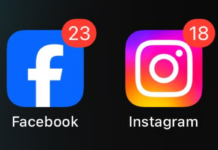
Twitter is trialling a new feature allowing users to share “notes” as long as 2,500 words.
The social media platform normally limits posts to 280 characters.
Twitter said the move was a response to seeing people use the platform to post pictures of longer announcements and steer followers to outside newsletters.
The test will run for two months and involve a small group of writers in Canada, Ghana, the UK and US.
The new feature aims to keep audiences in the Twitter eco-system, with readers able to see a headline and access the longer note by clicking on a link.
READ MORE:
Writers will be able to embed gifs, photos and other features into long-form essays that can be read on and off Twitter. Notes can also be edited after they have been published.
“Since the company’s earliest days, writers have depended on Twitter to share their work, get noticed, be read, create conversation – everything but the actual writing,” the company said, making the announcement using the new Notes product.
“With Notes, the goal is to fill in that missing piece.”
The move follows Twitter’s purchase last year of Revue, a Dutch newsletter start-up.
Social media expert Dr Laura Toogood said the trial was a significant step for Twitter. She said the feature would encourage people to stay within the platform itself, rather than linking out to other websites that can host long-form content.
“Adding this extra capability means that Twitter is now in a position to compete with some of the popular blogging platforms and potentially attract a new audience and a different type of user,” she told the BBC.
“It will also encourage existing users to blog within Twitter, rather than move to other websites for this purpose, which will help to retain their audience.”
In 2017 Twitter increased the maximum number of characters for tweets from 140 to 280, following a trial among a small group of users.
The latest move comes amid scrutiny of the Twitter’s business prospects, as Elon Musk’s planned takeover of the company raises questions about its direction.
The firm announced in April it was working on an edit button, shortly after Mr Musk – who had called for such a feature – revealed he had bought a large stake in the company. Twitter said the events were unrelated.
Mr Musk has also said he sees potential in a subscription model in which people would pay to use the platform.
Dr Nikki Usher, a journalism professor at the University of Illinois Urbana-Champaign, said it was hard to know whether Twitter was trying out new formats out of profitability or a genuine desire to try to improve the platform.
“In this case, one of the things we do know is that people do not like to read long texts online,” they told the BBC.
“So whether giving people 2,500 characters to work with will ultimately make a difference in the quality of the digital public sphere – well, I think it’s unlikely. Is it a chance to grab headlines in advance of some major changes at the company? Absolutely.”

![Yaa Pono fires shots at Sarkodie in new song – “Your favourite rapper is not from Tema” [Listen]](https://www.adomonline.com/wp-content/uploads/2024/05/image_2024-05-16_112717602-218x150.png)



